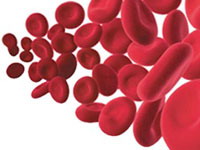Clinical inertia hampers management of hypertension in diabetic patients
Recently the problem of clinical inertia has been actively discussed. The latest study conducted by Dr. Eve A. Kerr and colleagues raised this problem in connection with blood pressure and diabetes.

The main problem lies in inability to determine true blood pressure. Doctors are not usually sure whether it’s reasonable to intensify BP-lowering treatment when a diabetic patient has high BP (hypertension).
Therapeutic inertia is a measurement of the resistance to therapeutic treatment for an existing medical condition. It is commonly measured as percentage of the number of encounters in which a patient with a condition received new or increased therapeutic treatment out of the total number of visits in which a patient had a condition. A high percentage indicates that the health care provider is slow to treat a medical condition. A low percentage indicates that a provider is extremely quick in prescribing new treatment at the onset of any medical condition.
To reveal main factors that underlie clinical inertia, scientists studied 1,169 diabetic patients with hypertension seen by 92 primary care doctors at 9 VA facilities.
All the patients had high BP (140/90 mm Hg). In spite of these figures, only about 49 percent of the patients received intensified treatment.
The majority of patients was not so specifically treated because doctors were at dead end once they themselves recorded a BP measurement of less than 140/90 versus a higher reading during the visit, or when patients reported that their BP readings at home were less than 140/90 rather than higher.
The best way out is to be more consistent in measurements to optimize management of hypertension and improve outcomes for high-risk population.
Subscribe to Pravda.Ru Telegram channel, Facebook, RSS!





